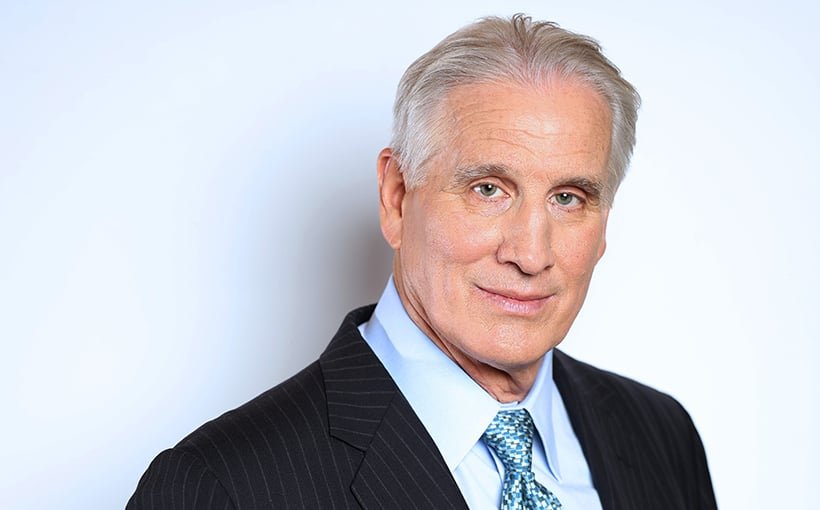

The Oct. 8 Walker Webcast—“The Most Insightful Hour in CRE”—saw host Willy Walker (Chairman and CEO of Walker & Dunlop) and economist Peter Linneman (Principal of Linneman Associates) meeting for the 23rd time since the start of the Walker Webcast.
The duo discussed, and at times squared off, topics including the price of oil, the government shutdown, job creation, and even the annual reading of the Declaration of Independence at Independence Hall in Philadelphia.
A Cloudy Picture
At the start of the discussion, Linneman explained that he isn’t as optimistic these days as he has been in the past. The reasons are ever-changing market intelligence, and due to the government shutdown, the lack of any data.
When Walker asked him how this might impact capital flows and how investors should react, “if you don’t have anything to do in the next three weeks,” Linneman responded, half-jokingly. He added that the Bureau of Labor Statistics and other government data providers will eventually come back online and provide the necessary information for decision-making.
The Federal Reserve—Cuts amid Defiance
Linneman also said he hopes that the Federal Reserve will be able to sneak in another Effective Federal Funds Rate in late October, adding that “they can’t pause things forever.”
Linneman said he still believes that the Fed will have three cuts by the end of 2025. “I thought they’d cut 50 basis points at the last meeting, but for Trump,” he said. “They’re basically giving Trump the finger.”
Linneman said that Trump’s bluster, rhetoric, and activity have delayed interest rate cuts. The Fed doesn’t want to be perceived as “bowing down to him,” Linneman added.
Housing—The REAL Reason for a Home Sales Lack
The webcast discussion also focused on home sales and the housing market. Walker reminded Linneman that the latter said there is a shortage of 3.5 million homes, suggesting demand. However, builders “are building to their budgets but not going above it,” Walker said, challenging Linneman’s supply and demand analysis.
Linneman responded by saying his analysis is correct, but . . .
For one thing, regulatory costs and local governments can sometimes be an inhibitor.
Then, there’s money.
Linneman explained that he conducted research in the 1990s about why people couldn’t buy homes. Linneman exposed the fallacy that people aren’t earning enough. “Income determines what kind of home you buy, a big one, a small one, at the corner, or the middle of the block, etc.,” he said.
The real obstacle standing in the way is the down payment. Home prices have increased because there is a shortage of available homes. And people need to save longer to accumulate a down payment.
Additionally, “young people today have decided they would rather go on a ski or Caribbean holiday for a week than to save that money,” Linneman said. “They would rather go to a restaurant every week than once a month and use GrubHub rather than cooking at home. These might sound like peanuts, but they add up.”
Foreign Investment—Is It Still Happening?
Walker asked about overseas capital flow. Specifically, foreign investors aren’t shunning U.S. Treasuries and other assets. “Is it the fact that they have great confidence in the U.S. and don’t mind our budget deficits as long as we’re making money,” Walker queried.
No, Linneman said. Foreign investors don’t have confidence in the United States. But they have even less confidence in France, England, Russia, China and Brazil. “Everywhere else is showing massively lower economic growth than here, even though political stability could be a lot better,” he commented.
Linneman compared the foreign capital investments to teenagers who complain all the time about their parents, their home and how terrible it all is. “Then, at six, they always show up for dinner,” he commented.
The Best Markets for Office and Industrial
In referring to the Linneman Letter, Walker expressed his surprise that no one market was a winner in Q3 for CRE investment. However, stronger office markets were in Miami, FL; Charleston, NC; and St. Louis, MO. At the same time, St. Louis proved to be one of the strongest areas in terms of industrial investment.
But Linneman cautioned that St. Louis doesn’t refer to the city of St. Louis. “The metro has had relatively slow growth and almost no development,” he said. He explained that Detroit was also worthy of consideration two or three years ago. “I didn’t say ‘go everywhere in Detroit,’” he said. “I was saying ‘go somewhere in Detroit’ because no one was building.”
One piece of advice Linneman offered was to consider markets where there’s growth and no building. Still, “this would be interesting for an owner, but maybe not for a developer,” he added.
On-demand replays of the October 8 Walker Webcast are available through the Walker Webcast channels on YouTube, Spotify and Apple. Subscribe to get invites, replays and articles for new Walker Webcast episodes every week.
The post Walker Webcast: The Fed, the Housing and Other Things—a Discussion with Economist Peter Linneman appeared first on Connect CRE.






